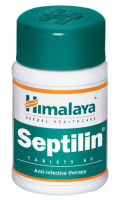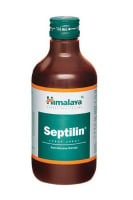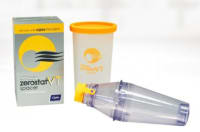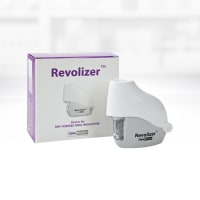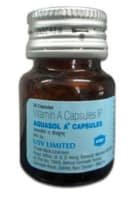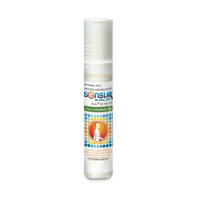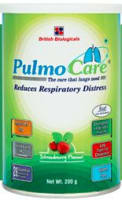
Interaction with alcohol is unknown. Please consult your doctor.

WEIGH RISKS VS BENEFITS
Tbzide Tablet may be unsafe to use during pregnancy.Animal studies have shown adverse effects on the foetus, however, there are limited human studies. The benefits from use in pregnant women may be acceptable despite the risk. Please consult your doctor.

Tbzide Tablet is probably safe to use during lactation. Limited human data suggests that the drug does not represent a significant risk to the baby.

It is not known whether Tbzide Tablet alters the ability to drive. Do not drive if you experience any symptoms that affect your ability to concentrate and react.

Tbzide Tablet should be used with caution in patients with severe kidney disease. Dose adjustment of Tbzide Tablet may be needed. Please consult your doctor.Kidney function tests are advised before you start taking this medicine.

CAUTION
Tbzide Tablet should be used with caution in patients with liver disease. Dose adjustment of Tbzide Tablet may be needed. Please consult your doctor.Regular monitoring of liver function tests is advised before and after the start of the treatment.
Uses of Fluxit Tablet
Fluxit Tablet is used in the treatment of fungal infections.
Uses of Tbzide Tablet
Tbzide Tablet is used in the treatment of tuberculosis.
How to use Fluxit Tablet
Take this medicine in the dose and duration as advised by your doctor. Swallow it as a whole. Do not chew, crush or break it. Fluxit Tablet may be taken with or without food, but it is better to take it at a fixed time.
How to use Tbzide Tablet
Take this medicine in the dose and duration as advised by your doctor. Swallow it as a whole. Do not chew, crush or break it. Tbzide Tablet is to be taken with food.
How Fluxit Tablet works
Fluxit Tablet is an antifungal medication. It stops the growth of fungus by preventing them from forming their own protective covering which is required for their survival in the human.
How Tbzide Tablet works
Tbzide Tablet is an antibiotic. It works by slowing the growth of bacteria that causes tuberculosis.
Common Nausea, Abdominal pain, Skin rash, Increased liver enzymes.
Common Jaundice, Hepatitis (viral infection of liver), Increased liver enzymes, Joint pain.
Expert advice for Fluxit Tablet
Your doctor has prescribed Fluxit to cure your infection and improve symptoms. Do not skip any doses and finish the full course of treatment even if you feel better.
Expert advice for Tbzide Tablet
Avoid alcoholic beverages while taking this drug.
Do not have any immunizations/vaccinations while using this medication without the consent of your doctor.
Contact your doctor immediately if you experience symptoms such as persistent nausea, vomiting, feeling of discomfort (malaise) or jaundice (abnormal liver function causing yellowing of skin and eyes) while taking pyrazinamide. It indicates that you are developing liver disease.
Constant monitoring of liver function (especially levels of enzymes aspartate transferase [AST] and alanine transferase [ALT]) and blood uric acid levels is advised while on treatment with pyrazinamide.
Do consult your doctor before taking pyrazinamide if you are pregnant or planning to become pregnant.
Do not use pyrazinamide, if you are breast-feeding.
Do not stop taking pyrazinamide without consulting your doctor.
If you forget to take a dose of pyrazinamide, take it as soon as you remember. Do not double the dose to make up for the missed dose.
Do consult your doctor if you are taking oral contraceptive medications (hormonal birth control pills) for birth control. Your doctor may ask you to use other means of birth control (eg. condom, diaphragm with spermicide) to prevent pregnancy while taking pyrazinamide.
Q. What is Fluxit used for?
Fluxit is an antifungal drug, used for the treatment of many fungal infections like Cryptococcal meningitis (fungal infection in the brain), Coccidioidomycosis (a disease of the lungs), infections caused by Candida, found in the blood stream, body organs (e.g. heart, lungs) or urinary tract, mucosal thrush (infection affecting the lining of the mouth, throat and denture sore mouth), genital thrush – infection of the vagina or penis, skin infections like athlete's foot, ringworm, jock itch, nail infection.Fluxit capsules can also be used to stop cryptococcal meningitis, mucosal thrush, vaginal thrush from coming back and to stop you from getting an infection caused by Candida (if your immune system is weak and not working properly).
Q. Can Fluxit be taken with oral contraceptives (OCPs) or birth control pills?
Fluxit has been reported to have a minor interaction when taken with estradiol (a component of OCPs), it can increase the level or effect of estradiol when given along with it. Talk to your doctor if you are taking birth control pills and you have been asked to take Fluxit also.
Q. Can Fluxit be taken with azithromycin?
Yes, Fluxit can be safely taken with azithromycin. A combination kit with agents of the similar class is available for vaginal infections. Talk to your doctor before taking any antibiotics for your conditions.
Q. Can Fluxit cause hair loss?
Hair loss is a rare side effect seen with the use of Fluxit. Talk to your doctor if you experience hair fall while taking Fluxit.
Q. Is Fluxit a steroid?
Fluxit is not a steroid. Fluxit belongs to a group of medicines called antifungals.
Q. Is Fluxit an antibiotic?
Fluxit is an antibiotic. It is an antifungal and is used to treat infections caused by fungi.
Q. Is Fluxit safe?
Fluxit is safe if taken for prescribed duration in prescribed doses as advised by your doctor.
Q. Is Fluxit fungistatic or fungicidal?
Fluxit is primarily fungistatic (inhibits the growth of fungus), however it may be fungicidal (kills fungus) against certain organisms in a dose-dependent manner, specifically Cryptococcus.
Q. Is Fluxit over the counter (OTC)?
Fluxit is not an over the counter (OTC) product. It is available only when prescribed by your doctor.
Q. Can I take Fluxit with ciprofloxacin?
Fluxit can be taken with ciprofloxacin. No drug-drug interactions have been reported between the two. However, interactions can occur. Please consult your doctor before taking the two medicines together.
Q. Can I take Fluxit with metronidazole?
Fluxit can be taken with metronidazole. No drug-drug interactions have been reported between the two. However, interactions can occur. Please consult your doctor before taking the two medicines together.
Q. Can I take Fluxit with probiotics?
Fluxit can be taken with probiotics. No drug-drug interactions have been reported between the two. However, interactions can occur. Please consult your doctor before taking the two medicines together.
Q. Can I take Fluxit with clarithromycin?
Clarithromycin and Fluxit both increase QT interval (abnormal heart rate). It can increase the level of clarithromycin by decreasing its breakdown, further increasing the chances of an abnormal heart rhythm. Please consult your doctor before taking the two medicines together.
Q. Can I take Fluxit with omeprazole?
Fluxit can increase the level or effect of omeprazole by decreasing its breakdown (metabolism). Please consult your doctor before taking the two medicines together.
Q. Can I take Fluxit with citalopram?
Fluxit can increase the level or effect of citalopram by decreasing its breakdown (metabolism). Please consult your doctor before taking the two medicines together.
Q. Can I take Fluxit with cetirizine?
Fluxit can be taken with cetirizine. No drug-drug interactions have been reported between the two. However, interactions can occur. Please consult your doctor before taking the two medicines together.
Q. Can I take Fluxit with erythromycin?
Use of Fluxit and erythromycin at the same time has the potential to increase the risk of cardiotoxicity (harmful to heart) and consequently sudden heart death. Co-administration of Fluxit and erythromycin is not recommended at all.
Q. Can I take Fluxit with nitrofurantoin?
Fluxit can be taken with nitrofurantoin. No drug-drug interactions have been reported between the two. However, interactions can occur. Please consult your doctor before taking the two medicines together.
Q. Does Fluxit work?
Fluxit works if taken for the right indication for a prescribed duration in prescribed doses as advised by your doctor.
Q. Does Fluxit treat bacterial vaginosis?
Fluxit does not treat bacterial vaginosis as it is not active against any bacteria. Fluxit is used to treat infection of the vagina caused by Candida (a fungal infection). If you think you are suffering from bacterial vaginosis, please consult your doctor as treatment should be started after the diagnosis of your infection (whether it is fungal or bacterial).
Q. Does Fluxit treat urinary tract infection (UTI)?
Fluxit is used to treat urinary tract infection (UTI) caused by Candida. UTI can be caused by bacteria also. If you are suffering from UTI, please consult your doctor as the cause of infection (fungal or bacterial or other) needs to be identified before the start of any treatment.
Q. Does Fluxit make you tired?
Fluxit can make you feel tired. Please consult your doctor if you experience excessive tiredness while taking Fluxit as it could be a sign of underlying liver problem. Fluxit can affect your liver.
Q. Does Fluxit contain penicillin?
Fluxit does not contain penicillin. Fluxit belongs to a group of medicines called antifungals.
Q. Does Fluxit have sulfa in it?
Fluxit does not contain sulfur. Fluxit belongs to a group of medicines called antifungals.
Q. Does Fluxit treat chlamydia?
Fluxit does not treat Chlamydia. Fluxit is used for the treatment of fungal infections.
Q. Can I take Fluxit for yeast infection?
Fluxit is used to treat infections caused by fungi and can be used to help you from getting a candidal (yeast) infection. If you think you are suffering from a yeast infection, please consult your doctor as it requires a proper diagnosis before the start of any therapy.
Q. What is Tbzide and what is it used for?
Tbzide is an antibiotic. It is used in combination with other antibiotics in the treatment of tuberculosis
Q. Is Tbzide bactericidal?
Tbzide is both a bacteriostatic and a bactericidal antibiotic. It stops the growth of bacteria (bacteriostatic) in certain cases and kills (bactericidal) the tuberculosis causing bacteria in other cases
Q. How does Tbzide work/treat tuberculosis?
Tbzide kills or stops growth of bacteria that causes tuberculosis (Mycobacterium tuberculosis). The exact mechanism of action for Tbzide is not known
Q. How does Tbzide cause hyperuricemia and gout?
Following oral intake of Tbzide, it gets converted in the body to pyrazinoic acid (active chemical form of Tbzide). Pyrazinoic acid blocks the excretion of urates (salt form of uric acid) by the kidneys. This causes an increase in blood levels of uric acid (hyperuricemia). Excess uric acid accumulation between joints causes pain, swelling, redness and stiffness in joints (gout).


 Tbzide Tablet
Tbzide Tablet  Bookmark
Bookmark
